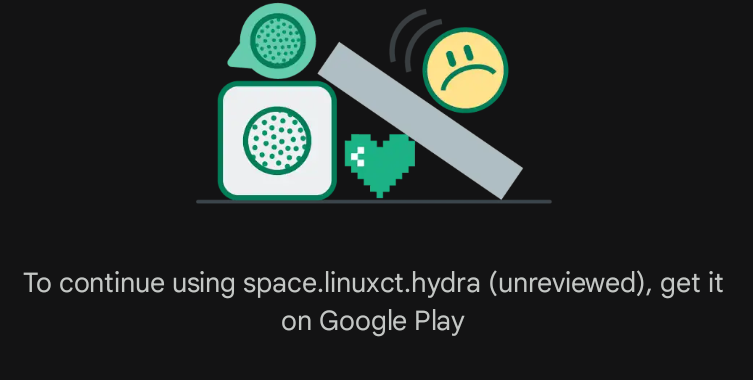You might sideload an Android app, or manually install its APK package, if you’re using a custom version of Android that doesn’t include Google’s Play Store. Alternately, the app might be experimental, under development, or perhaps no longer maintained and offered by its developer. Until now, the existence of sideload-ready APKs on the web was something that seemed to be tolerated, if warned against, by Google.
This quiet standstill is being shaken up by a new feature in Google’s Play Integrity API. As reported by Android Authority, developer tools to push “remediation” dialogs during sideloading debuted at Google’s I/O conference in May, have begun showing up on users’ phones. Sideloaders of apps from the British shop Tesco, fandom app BeyBlade X, and ChatGPT have reported “Get this app from Play” prompts, which cannot be worked around. An Android gaming handheld user encountered a similarly worded prompt from Diablo Immortal on their device three months ago.
Google’s Play Integrity API is how apps have previously blocked access when loaded onto phones that are in some way modified from a stock OS with all Google Play integrations intact. Recently, a popular two-factor authentication app blocked access on rooted phones, including the security-minded GrapheneOS. Apps can call the Play Integrity API and get back an “integrity verdict,” relaying if the phone has a “trustworthy” software environment, has Google Play Protect enabled, and passes other software checks.
Graphene has questioned the veracity of Google’s Integrity API and SafetyNet Attestation systems, recommending instead standard Android hardware attestation. Rahman notes that apps do not have to take an all-or-nothing approach to integrity checking. Rather than block installation entirely, apps could call on the API only during sensitive actions, issuing a warning there. But not having a Play Store connection can also deprive developers of metrics, allow for installation on incompatible devices (and resulting bad reviews), and, of course, open the door to paid app piracy.



That was the hope with Android, too.
The problem is that as the OS is “free” that means it costs less functionally for the device manufacturer to get an OS on the device, so now they can pour more money into bloatware.
Android was supposed to stop bloatware but all it did was enable it.
Even without a forced “store” Linux is prey to the same issue of piecemeal support from various vendors all with in-house solutions that all stink.
At this point, even that would be preferable.
Your right, any open platform will be bastardized eventually, but that doesn’t mean there isn’t still a need for “resets”.
There is no perfect platform for escaping it, because the market forces will always adapt and assimilate. The only true escape is to keep moving.
That’s why it’s important for users to be hermit crabs, and move to the next thing, no matter how janky, because they will at least be able to influence it positively and have a relatively open platform for a number of years. Then the cycle repeats.
If propping up Linux phones will get us the open platform we need, even if only temporarily, we should do it.
The issue I think is that the current trends in all consumer software are increasingly user hostile, and the major platforms are creating ecosystems to support this. It’s become the norm now to be able to directly control the usage of the software on consumer devices. Apple has normalized this, Google and Microsoft followed.
At what point will developers refuse to even create software for a system that doesn’t allow them that control?
Look at how many developers out there absolutely jerk themselves raw at the idea they should be able to compel users to update to continue using their software. Look at how many believe the modern security culture fallacy that handcuffing users and throwing away the key is the only way to protect them.
It’s a development culture issue. Respecting user control of their own device is no longer in vogue.